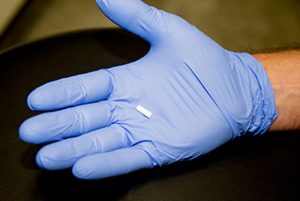Most men lose testosterone with age, affecting their libido and energy level. Decreased muscle mass, irritability and erectile dysfunction are all symptoms of low T. It’s difficult for any man to feel his best when he feels depressed, fatigued and unable to perform with his partner the way he used to. Those diagnosed with a condition known as hypogonadism may be treated with testosterone replacement therapy (TRT).
 TRT can take many forms, from patches to creams to injections. One option for a consistent dose over a long period are pellets. Consistency is important because varying testosterone levels can leave a man feeling as if he’s on a rollercoaster, up and down when it comes to mood, sexual activity and energy levels.
TRT can take many forms, from patches to creams to injections. One option for a consistent dose over a long period are pellets. Consistency is important because varying testosterone levels can leave a man feeling as if he’s on a rollercoaster, up and down when it comes to mood, sexual activity and energy levels.
The pellets also have the benefit of not exposing women and children to excess testosterone, as can easily happen by accident when self-administering creams, gels or injections. Pellets are small enough to be implanted under the skin, slowly releasing testosterone over the course of several months.
The implant procedure is short and simple, done in a doctor’s office. Nurse Practitioner Geoffrey McGowen has performed the procedure many times and is versed in the complexities of treating the symptoms of low testosterone. The pellets are inserted under the skin, usually near the hip. After injecting the patient with a local anesthetic to numb feeling in the hip – this may feel like a bee sting – a small incision is made and the pellets are added. Implantation may sound scary, so physicians will usually discuss before the procedure to answer any questions.
There is a risk of infection, so it is very important to clean the area of skin around the incision point and to avoid activities such as swimming or bathing in a hot tub for a period following the procedure.
About a month after the procedure, patients may experience peak testosterone replacement from the pellets. A follow-up visit is recommended to measure the level of testosterone.
Some potential side effects of TRT include increased red blood cell count and an increased potential for heart disease. TRT may be paired by a physician with a visit to a cardiologist to monitor the body. A PSA test once or twice a year is also a good idea to measure any impact on the prostate.
As with many health conditions, lifestyle changes including diet and exercise can help to raise testosterone levels naturally and avoid testosterone replacement therapy as a longer-term commitment.
The best TRT therapy for a specific patient depends on individuals needs after consulting with a medical professional. Testosterone therapy isn’t a magical solution, but in some cases, the boost in energy and libido can leave people feeling as if they’ve gotten their lives back.
Geoffrey McGowen is available to see patients at Academic Urologists Of Erlanger
Providing Urological health services for men of all ages. From regular check ups to treating complex conditions, our doctors and specialists have the experience and resources to provide the best care available in Chattanooga and the surrounding region. Our Board Certified, Fellowship Trained specialists in male reproductive and prosthetic urology, treat some of the most common urological problems, including incontinence, kidney stones, testicular and sexual health issues, including Erectile Dysfunction and hormone deficiencies, as well as Benign Prostatic Hyperplasia and other prostate conditions.
